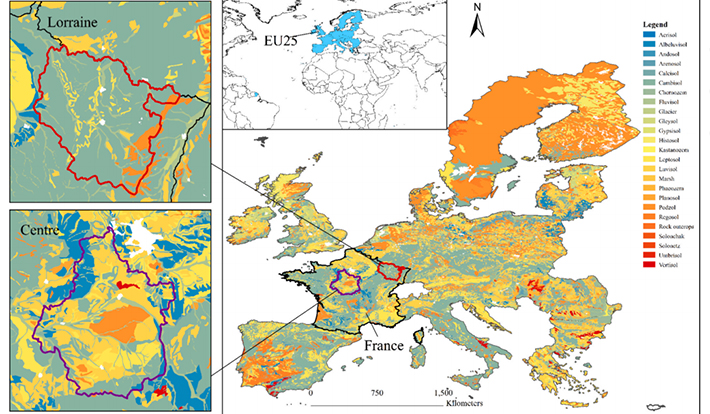Strategies for the efficient estimation of multi-scale soil properties from spectral degradation through Vis-NIR spectroscopy
发表期刊:Infrared Physics & Technology
分区:SCI二区
影响因子:3.4
Laboratory visible and near-infrared (Vis-NIR) spectroscopy is recognized as a promising alternative to traditional soil physicochemical analysis because of its economic, rapid, and environmental advantages. However, the impact of spectral degradation on soil attribute estimation at different scales remains unclear. The objectives of this study were to evaluate the impact of spectral degradation on modeling soil properties across multiple scales, determine the optimal spectral resolution for estimating Clay, soil organic carbon (SOC), and nitrogen (N), and analyze the scale differences in spectral degradation during feature band selection. To achieve these objectives, ten spectral degradation configurations were generated based on the LUCAS spectral library. Each configuration was analyzed at different scales using the principal component analysis (PCA) method, and the characteristic bands were selected using the competitive adaptive reweighted sampling (CARS) algorithm. Subsequently, predictive models were established for Clay, SOC, and N contents. The results indicate that: 1) Spectral degradation affects both model quality and efficiency across scales. Model accuracy remains stable as resolution decreases from 1 nm to 20 nm but declines from 40 nm onward. 2) At continental and national scales, the optimal resolution for estimating Clay and N is 20 nm (R2 = 0.67 and 0.71 at the continental scale; 0.48 and 0.78 at the national scale), while for SOC it is 10 nm (R2 = 0.52 and 0.80, respectively). At the regional scale, 10 nm is optimal for estimating Clay, SOC, and N, with R2 values of 0.85, 0.55, and 0.58 in Centre, and 0.59, 0.84, and 0.91 in Lorraine. 3) As spectral quality declines, the proportion of characteristic bands for Clay, SOC, and N gradually increases at continental and national scales but shows an "increase-decrease-increase" trend at the regional scale. Across all scales, characteristic bands are mainly concentrated in the 600-900 nm, 1300-1900 nm, and 2100-2300 nm ranges. This study provides significant implications for estimating soil properties at different scales using visible-near infrared spectroscopy technology.


